The content of the article
It would seem special if a person has a runny nose? Indeed, a runny nose does not constitute any danger if it lasts no more than a week and the snot has a transparent color. However, if the disease is delayed, and there is no improvement, many people ask themselves the question - is it an allergic one? This is especially true for children, because their immune system is not fully formed and parents cannot be sure if the baby is allergic to something.
Confusing an allergic rhinitis with a cold is very simple. Many symptoms of SARS can also be with allergies - sneezing, coughing, lacrimation. What to do in this situation? How to distinguish one from the other? After all, if a runny nose is allergic in nature, the principles of treatment change radically.
What is the difference between a cold and a cold
Everyone knows how a viral disease develops, but not everyone is familiar with an allergic reaction. If you have a runny nose, pay attention to the accompanying symptoms.
- Origin. Often a person knows the cause of a viral infection. That is, a runny nose is likely to catch a cold if it appears after hypothermia or after contact with a sick person. Allergic rhinitis often appears suddenly, develops rapidly.
- Pathogen. If you have an allergic rhinitis, you can try to track down the allergen your body is responding to. Analyze when a runny nose activates. If mucus production is increased indoors, pay attention to dust or possible allergens in this house. Sometimes a runny nose occurs on animal hair, after inhaling the pollen of certain plants. If the runny nose is activated only at night, a reaction to the pillow filler is possible.
- Temperature. If you have a cold, pay attention to body temperature. If it is at least slightly enlarged (usually in the early days of the illness), then the nature of the common cold is colds. If there is no temperature, this does not mean at all that the runny nose is definitely allergic - sometimes a cold can also pass without an increase in temperature.
- Eyes. When you cannot understand the cause of the common cold, pay attention to the eyes. If they watery, swell and itch, you are most likely allergic. If you feel only a slight pain, tingling and burning in the eyes - this is more like symptoms of a cold. It happens that allergic rhinitis is often accompanied by allergic conjunctivitis.
- Cough. Often a runny nose (both colds and allergies) is accompanied by a cough. Pay attention to this cough. A dry cough can be both for allergies and colds, but a wet cough is an accurate indicator of a viral infection. Dry, prolonged cough for several months can turn into asthma if it is allergic in nature. Usually, with such a cough, the doctor does not hear wheezing, the lungs are clean.
- Snot. If a runny nose is allergic in nature, then the mucus secreted from the nose is usually transparent. With bacterial rhinitis, the mucus becomes thick, yellow or green.
- Itching With allergic rhinitis, severe itching appears in the nose; there is no such itching during a catarrhal disease. The nose itches at the very base, because of which allergy sufferers often rub their nose with their hands, wrinkle.
- Sense of smell. During allergic rhinitis, odors are completely absent, while a cold of a common cold only slightly reduces the intensity of the aroma.
- Sneezing. A person can sneeze both during a cold and during an allergy. However, the nature of sneezing can tell us about the pathogen.If you sneeze several times throughout the day, you probably have a cold. But protracted sneezing attacks (15-20 times) indicate allergies.
- Skin color change. Often an allergic person with experience, in addition to the common cold, can find dark and blue circles under the eyes.
- Flow time. Another way to identify the type of runny nose is to pay attention to its duration. If the runny nose goes away for 7-10 days completely, then this is most likely an ARVI. If a runny nose in varying degrees accompanies you for a long time (especially in spring and summer) - this is an allergy.
- Rashes. In allergic rhinitis, the reaction of the body is often not limited to snot and cough. An allergic person may develop various rashes on the skin, urticaria and even eczema.
- Genes. If the parents are allergic, it is more likely that their child will also suffer from various kinds of allergic reactions. A predisposition to allergies is a hereditary pathology.
- Antihistamines. It is not difficult to distinguish a common cold from an allergy if you have antihistamines on hand. After drinking one pill, a person with a cold will notice only slightly relieved nasal breathing, since the medicine relieves swelling. If you are allergic, an antihistamine will give complete relief, albeit temporary.
- Lymph nodes. With a cold, they usually increase slightly.
- Wheezing. With an allergic rhinitis, wheezing, and even choking, can occur. This is especially true for children, because their laryngeal lumen is very small, and even slight edema completely blocks it.
- Throat. As a rule, with SARS, the throat becomes very red, sometimes even purulent (if a bacterial infection joins). But with allergic rhinitis, the throat can have only slight redness, which appeared from a barking allergic cough.
- Smoking. If you smoke, this is a big risk factor for developing allergies.
- Condition. A person who has a cold has a general state of health - pain in the joints appears, loss of appetite, want to sleep, headache. This is especially noticeable in children - they become moody, lethargic, tearful.
These are detailed symptoms by which you can distinguish a common cold from an allergic cold. However, sometimes the allergic nature of rhinitis often becomes bacterial, and vice versa. That is why it is best to cope with this task will help an allergist. He will ask you in detail about the lifestyle, the presence of pets in the house, as well as allergies among relatives. Often, allergy tests are prescribed to patients, which can detect not only the fact of the presence of allergies, but also help to identify the allergen.
How to treat a cold and allergic rhinitis
It is not difficult to treat a common cold, the main thing is not to start the process. A plentiful drink is needed - not a cup of raspberry tea, but 2-3 liters of warm liquid. This will allow you to flush the virus out of the body as soon as possible. In addition, you need to drink antiviral drugs, increase immune activity. Humidify the air in the room, ventilate the room so that the nasal mucosa does not dry out. As a treatment for the common cold, inhalations, rinsing of the nose, and warming are very effective. You can dig in the nose juice of garlic, onions, aloe and black radish. If the nose is blocked, use vasoconstrictor drugs, but remember they cannot be used for more than five days - they are addictive. A few days of such treatment - and the patient will certainly recover.
It is more difficult to deal with an allergic rhinitis. Especially if the allergen is not detected. You need to be as careful as possible about the bedding and textiles in the house - curtains, sofa upholstery, bedspreads, carpets. If possible, they should be abandoned, and those that remain should be vacuumed as often as possible. Wet cleaning needs to be done daily.There may be an allergy to certain foods, to animal hair, to medicines, to pollen. The main treatment for allergic rhinitis is the identification of the allergen and possible prevention of contact with it.
Allergy sufferers can install fine filters in the house, stop smoking, monitor hygiene in the house more carefully. To alleviate the symptoms of allergic rhinitis, you should always have antihistamines with you.
If a person suffers from an allergy, he usually can distinguish between an allergic rhinitis and a common cold, and he is well aware of his feelings. But the parents of young children have a hard time - they are still in search of the correct diagnosis. However, an experienced doctor will help distinguish one from the other, and prescribe adequate treatment.
Video: how to distinguish an allergic cough from an infectious


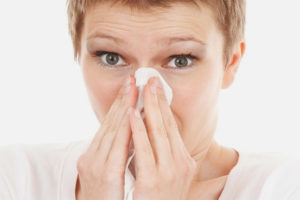
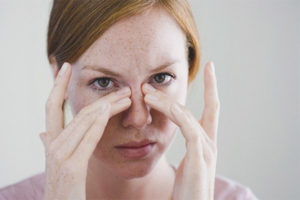


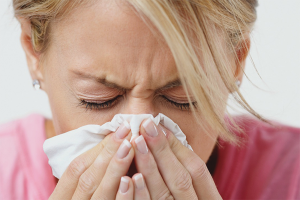
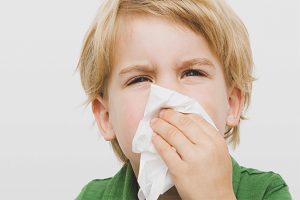
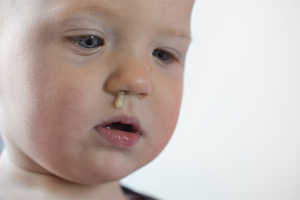
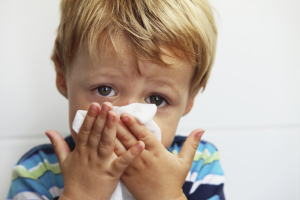
Submit